The Software as a Service (SaaS) business model has changed the way companies operate in the modern digital landscape. One important aspect that companies of this type need to understand is SaaS margins and their significance in evaluating business performance and profitability.
In this guide, we will delve into the basics of SaaS margins, explore how to calculate them accurately, understand the factors that influence them, discuss strategies to improve this metric, and examine the future trends in margin management.
| Key Element | Description |
|---|---|
| Definition of SaaS Margins | SaaS margins measure the profitability of a SaaS business, indicating the difference between revenue generated and the costs involved in delivering services. |
| Importance of SaaS Margins | Essential for assessing the financial health and sustainability of a SaaS business, helping to guide pricing strategies and operational adjustments. |
| Calculating SaaS Margins | Involves analyzing revenues, direct costs (COGS), and operational expenses to differentiate between gross margin and net margin for comprehensive profitability assessment. |
| Strategies for Improving Margins | Includes optimizing operational efficiencies, enhancing customer retention, and refining pricing strategies to align with customer value and market demands. |
| Future Trends in SaaS Margins | Technological advancements and market dynamics predict a focus on value-driven offerings and cost-effective operations to maintain competitive SaaS margins. |
The basics
SaaS margins refer to the profitability measures that assess the financial health of such businesses. By calculating this metric, companies can determine the profit generated from their services relative to the costs incurred in delivering those services.
Understanding SaaS margins involves delving into the financial landscape of subscription-based software services. It's not just about revenue and costs; it's about dissecting every aspect of the business model to uncover insights that drive strategic decisions and lead to sustainable growth.
What are SaaS margins?
📈 SaaS margins can be understood as the difference between the revenue generated by a SaaS product or service and the associated costs. These costs include direct expenses such as customer acquisition costs (CAC), customer retention costs (CRC), and operational costs.
Calculating and analyzing SaaS margins helps understand the financial performance of businesses in the industry.
Moreover, they demonstrate how value is created in the digital era. It's not simply about delivering a service, but it's about delivering value that resonates with customers, drives loyalty, and translates into sustainable profitability for the business.
Importance in business
SaaS margins play a vital role in evaluating the financial viability and sustainability of businesses in the industry. They provide insights into the efficiency of operations and help businesses understand the profitability of their offerings.
Monitoring this value allows companies to identify areas of improvement, optimize pricing strategies, and make informed decisions for future growth.
Furthermore, SaaS margins serve as a compass navigating the competitive landscape of the software industry. In a market driven by innovation and customer-centric solutions, understanding and optimizing this metric can be the difference between a thriving and a merely surviving business.
Calculation
Calculating SaaS margins involves determining the revenues and costs associated with providing the product or service. Here are some key components to consider when calculating this value:
Key components in SaaS margin calculation
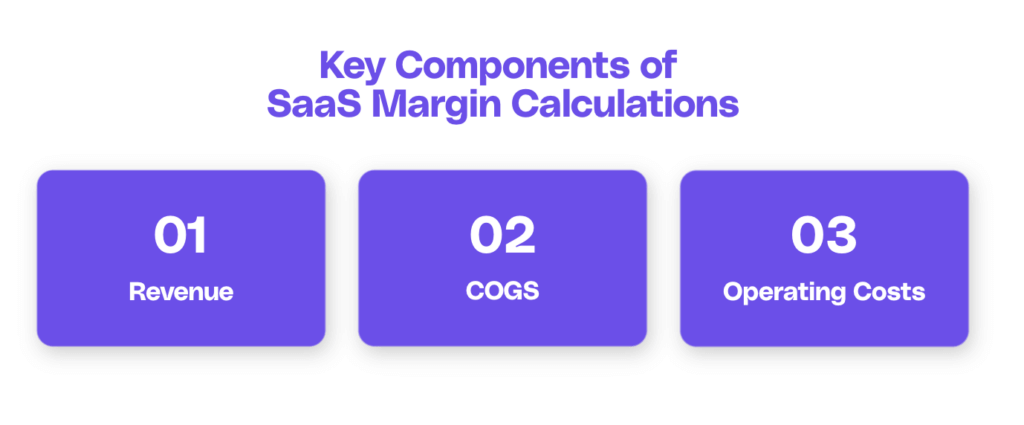
- Revenue: Calculate the total revenue generated from the SaaS product or service over a specific period.
- Cost of Goods Sold (COGS): Identify the direct costs directly attributable to delivering the SaaS offering, including infrastructure costs, software licensing fees, and support expenses.
- Operating Costs: Consider the indirect costs associated with running the SaaS business, such as marketing expenses, salaries, and overheads.
Understanding gross margin vs net margin
When calculating SaaS margins, it's essential to distinguish between gross margin and net margin.
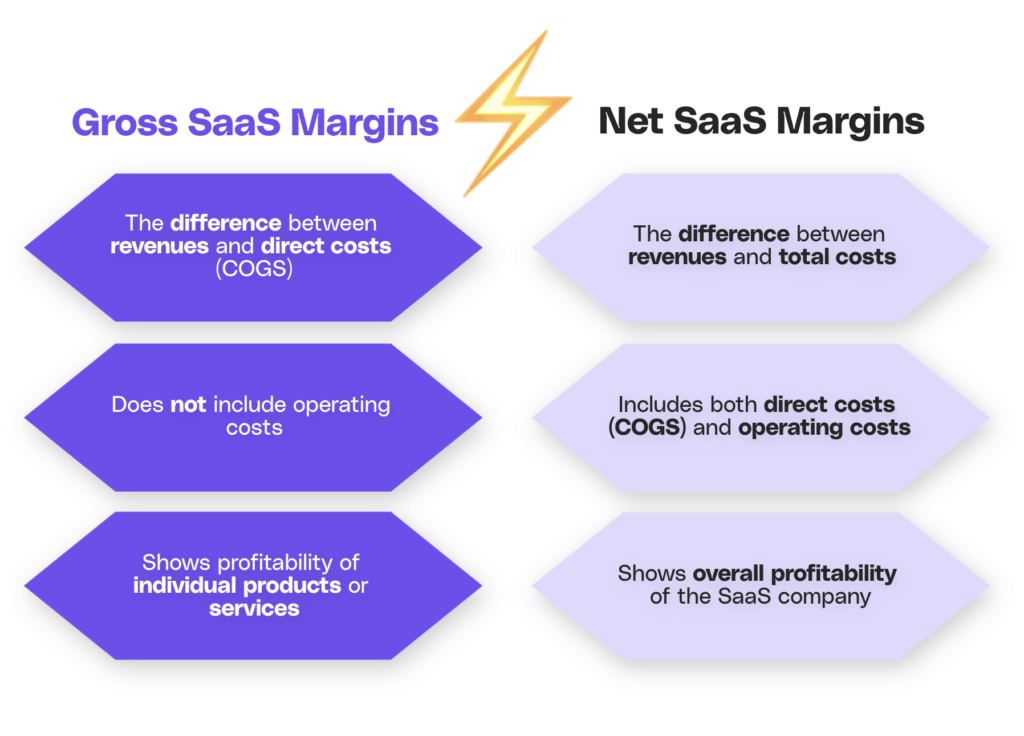
Gross margin represents the difference between revenue and direct costs (COGS). It provides insight into the profitability of individual products or services. A healthy gross margin is indicative of a sustainable business model and allows for reinvestment and growth.

Net margin, on the other hand, considers the operating costs in addition to the direct costs. It reflects the overall profitability of the SaaS business by factoring in all expenses associated with providing the service. A positive net margin indicates a profitable business that efficiently manages its costs.

Influencing factors
Several factors influence SaaS margins. Understanding these factors helps businesses identify areas of improvement and implement strategies to enhance their margins. Here are some critical factors to consider.
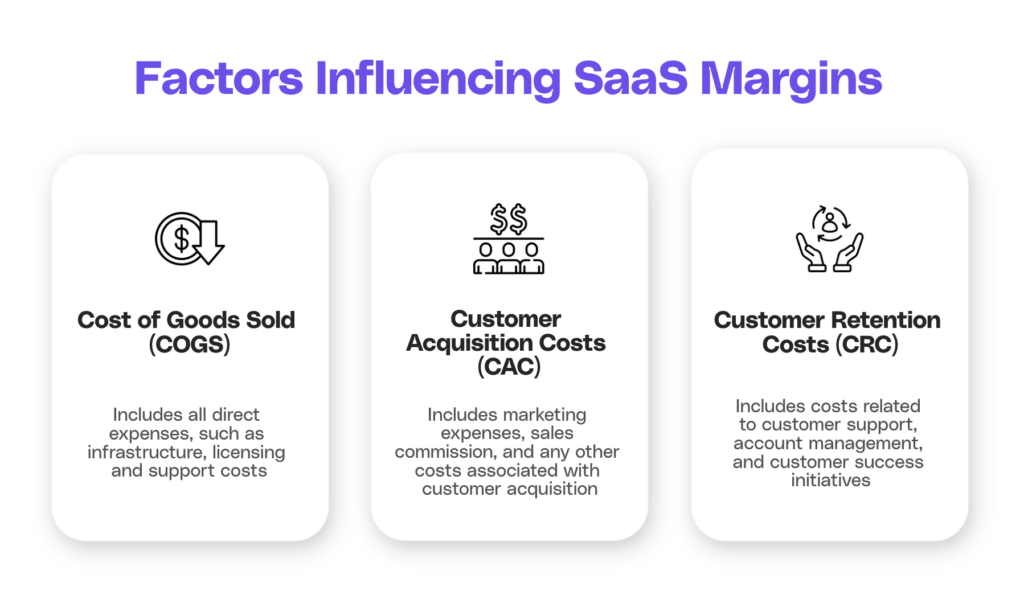
Cost of goods sold (COGS)
The cost of goods sold includes all the direct expenses incurred in delivering the SaaS product or service. It encompasses infrastructure costs, licensing fees, and support costs. Optimize and streamline these costs to improve SaaS margins.
Customer acquisition costs (CAC)
Acquiring new customers is essential for SaaS businesses, but it comes at a cost. CAC includes marketing expenses, sales commissions, and other costs associated with attracting new customers. Reducing CAC or optimizing customer acquisition strategies can positively impact SaaS margins.
Customer retention costs (CRC)
Retaining existing customers is equally important for SaaS businesses. CRC includes expenses related to customer support, account management, and customer success initiatives. Enhancing customer retention through effective customer support and engagement can enhance SaaS margins.
Improvement strategies
There are several ways to improve this metric.
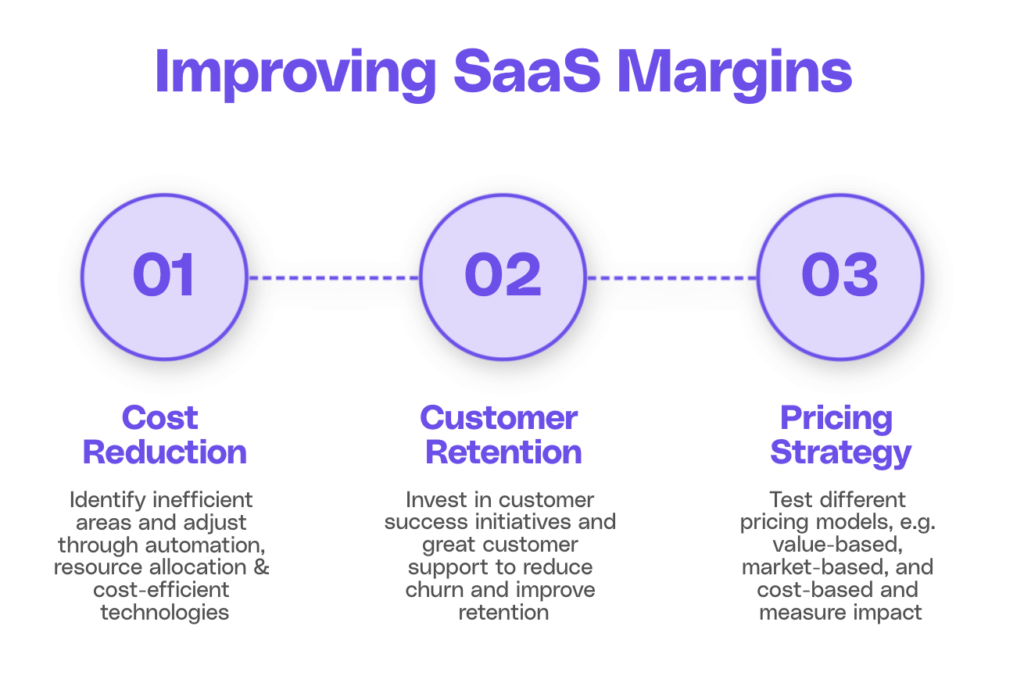
Reducing operational costs
Identify areas of inefficiency and optimize operational costs to improve SaaS margins. Look for opportunities to automate manual processes, improve resource allocation, and implement cost-effective technologies. Regular evaluation of operational expenses can help streamline operations and boost profitability.
Improving customer retention
Investing in customer success initiatives and providing top-notch customer support can enhance customer satisfaction and foster long-term relationships. Happy and satisfied customers are more likely to renew subscriptions, reducing churn and improving SaaS margins. Tools such as Zendesk can be helpful for this.
Optimizing pricing strategy
Revisit your pricing strategy to ensure it aligns with customer value and market demand. Conduct market research, analyze pricing tiers, and adjust prices accordingly.
Experiment with different pricing models and measure their impact on SaaS margins. Consider value-based pricing or offering different tiers with additional features to increase average revenue per user.
Future trends
Impact of technological advancements
Advancements in technology, such as artificial intelligence, machine learning, and automation, will continue to shape the SaaS industry. These technologies can improve operational efficiency, reduce costs, and enhance the overall customer experience, leading to improved SaaS margins.
Predicted trends
As the SaaS industry matures, we can expect increased competition and price pressure. To maintain healthy margins, companies will need to focus on value-driven offerings, targeted customer acquisition, and effective cost management.
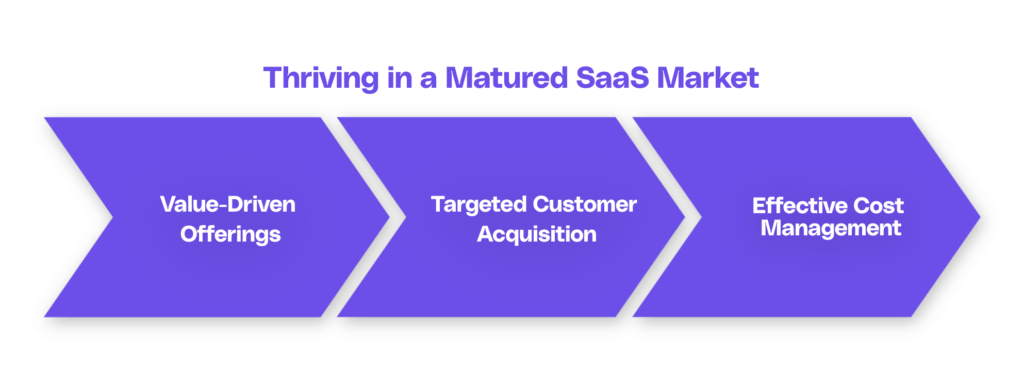
Additionally, the rise of subscription-based business models in various industries will contribute to the ongoing importance of this metric. In conclusion, understanding this value is vital for evaluating the financial performance and profitability of businesses in the field.
By accurately calculating and analyzing this metric, companies can make informed decisions, optimize their operations, and navigate the evolving landscape of the industry.
With the strategies and insights discussed in this comprehensive guide, businesses can unlock growth opportunities and build sustainable and profitable SaaS ventures.
Unlock growth with Cello's P2P referral program
Maximize your SaaS margins by turning your users into powerful growth engines with Cello. In just approximately 4 hours of development time, you can integrate a peer-to-peer referral program that not only enhances user experience but also accelerates your path to viral growth. With Cello, you'll see immediate payback, impressive conversion rates, and seamless integration that aligns perfectly with your existing tools. Experience the simplicity of frictionless sharing, automated rewards, and real-time performance tracking. Join the ranks of successful SaaS companies like tl;dv and watch your referral signups soar. Ready to see how Cello can transform your user base into your most valuable growth channel? Book a demo today and start building a more profitable future.
Resources
Related Articles
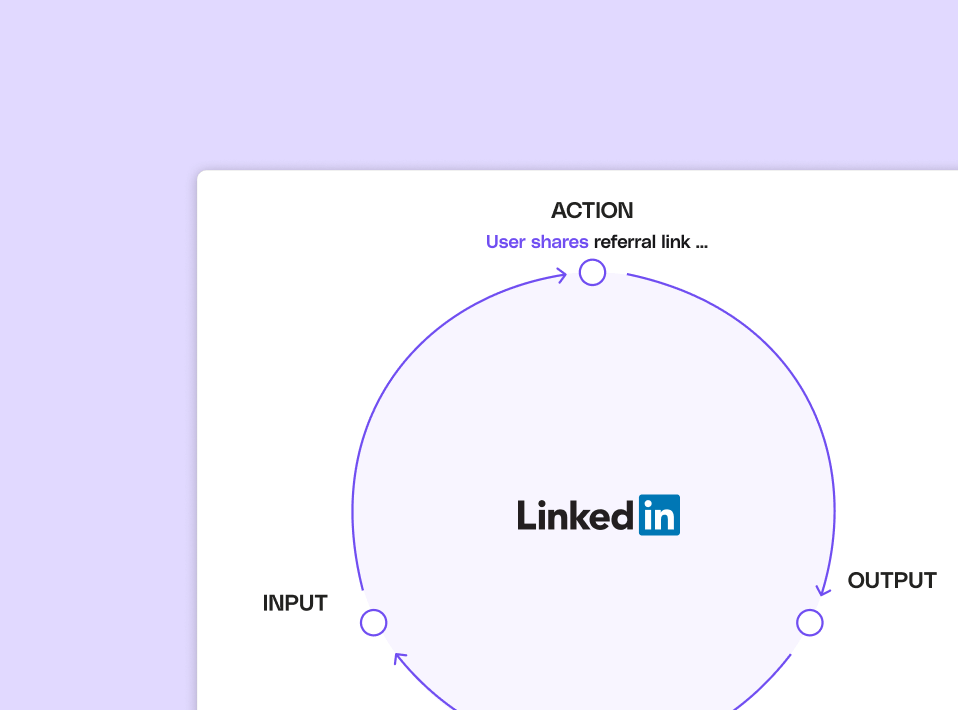
Referral Fees: A Comprehensive Guide
Learn how to boost your sales with powerful referral fee strategies. Discover proven tactics to ...
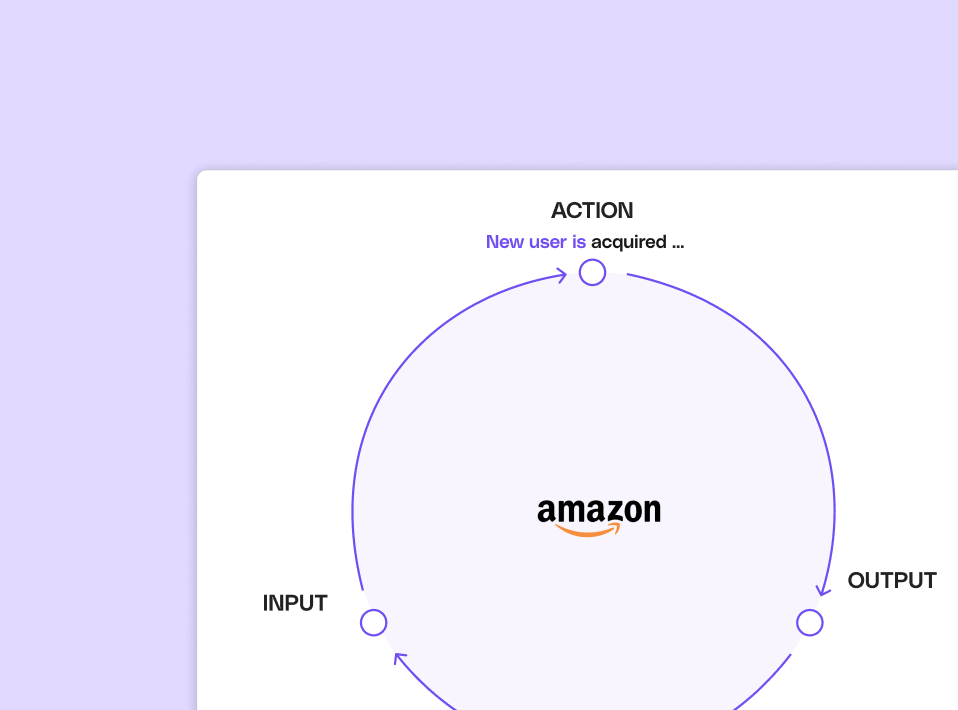
Complete Guide to Ad Growth Loops
Discover how ad growth loops can propel your marketing efforts to new heights.

The 4 Referral Program Categories for B2B SaaS (2025 Guide + Examples)
Learn how to get started with referral programs for B2B SaaS. Understand what type of referral ...

